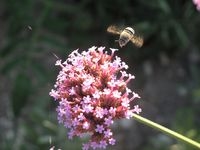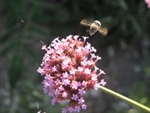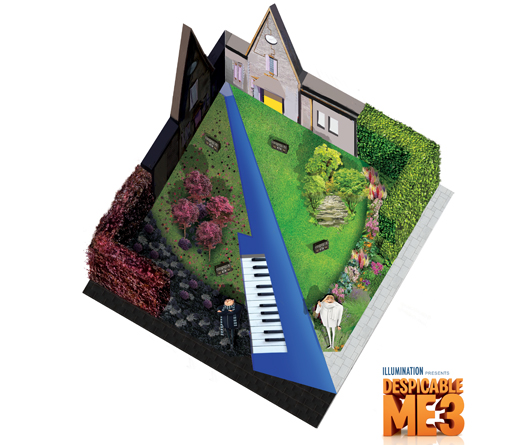
Ecologists from the University of East Anglia have helped produce the most detailed picture yet of how bumblebees use the landscape thanks to DNA technology and remote sensing. The results – which come from the largest ever study of wild bumblebee nests – could help farmers and policy makers ensure the countryside is better suited to the needs of these vital but declining pollinators. The findings are presented at INTECOL, the world’s largest international ecology meeting, in London recently.
Despite their size and often conspicuous colouring, bumblebees are difficult to study in the wild because their nests are almost impossible to find. To work out how far bumblebees forage from their nests, a team of ecologists from the Centre for Ecology and Hydrology (CEH), the University of East Anglia, University of Bristol, and Institute of Zoology instead took advantage of bumblebees’ unusual genetics.
Prof Andrew Bourke, a behavioural ecologist and evolutionary biologist from UEA’s school of Biological Sciences, said: “It’s very exciting to be part of a team bringing together ecologists, geneticists and modellers to tackle the threats to wild bees.
“We hope that, by providing detailed insights into how bumble bees move around landscapes, our results will lead to improved interventions for bees so that wildflowers and crops can continue to benefit from their essential pollination services.”
Dr Matt Heard of CEH said: “All workers in a bumblebee colony are daughters of a singly-mated queen, which means they are highly related in genetic terms. We decided to exploit this interesting aspect of their biology using a novel combination of genetics, field studies and landscape modelling.”
The team sampled DNA non-lethally from live wild bumblebees, including 2577 worker and 537 queen bees of five different species. Back in the laboratory they genotyped the samples, which allowed them to estimate how closely related the bees were across the landscape and group sisters, mothers and daughters into more than 2000 colonies.
This information was then overlaid onto detailed images of the study landscape taken by airborne remote sensing. The maps allowed the team to estimate the location of each colony as well as how far each bumblebee travelled to find food. These distances varied between averages of 268m to 553m depending on species, but were much greater, over 2km, for colonies in parts of the landscape with fewer flowers.
The results are important because they will allow policy makers and farmers to improve conservation schemes. “By using the secrets hidden within the DNA of bumblebees we can start to understand how queens and their colonies are using the landscape around them. Most importantly, we can ask whether conservation schemes to improve the countryside for bees, like planting more flowers on farmland, are having a positive effect. For example, reducing the distance that bumblebees have to fly to find food might increase their chances of survival into the next generation because they can devote more energy to reproduction,” explained Dr Heard.
“Our findings could help land managers to plan schemes to help conserve bumblebee populations in both agricultural and urban areas, and to enhance pollination services for crops and biodiversity.”
Under current agri-environment schemes, the UK Government pays farmers to manage their land for the benefit of particular habitats and species. However, the area targeted for bees and other pollinators is less than 0.1 per cent of the total managed area. Bumblebees are among the most important pollinators of many food crops and wild plants.
The next stage of the research is to use mathematical models to produce a “bees’ eye view” of the landscape. Dr Claire Carvell, the project leader, said: “Ultimately we want to be able to predict which types of landscapes work best for bumblebees and how these can be created against the backdrop of modern farming and the need for sustainable food production.”
Dr Heard will present the team’s findings to INTECOL at ExCel, London on Thursday 22 August 2013. He and Dr Carvell are working with Professor Andrew Bourke at the University of East Anglia, Dr Seirian Sumner and Dr Stephanie Dreier at the University of Bristol, and Dr Jinliang Wang at the Institute of Zoology. The research is funded by the national Insect Pollinators Initiative.

After starting my garden maintenance and landscaping business in 1984 and running it for 21 years I decided I needed a change of direction (probably a mid life crisis, no seriously! :-0) Together with my family, wife Donna, Son Henry and Daughter Fleur (not forgetting Hector the Black Labrador) I moved to France in search of an old farmhouse to renovate. In the interim period whilst waiting for the contract to go through I started writing a blog. Initially just to keep a diary for family and friends to keep up with our progress if they wished but then it occurred to me that there isn’t a real time watcher of the landscape industry in the UK. I didn’t want to waste my experience and experiences so I decided I could put all of this Juice to good use so I started Landscape Juice.
Source: Landscape Juice – Ecologists Get First Bumblebees’ Eye View of the Landscape





